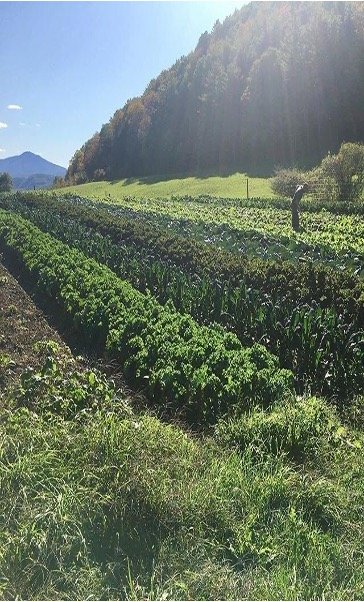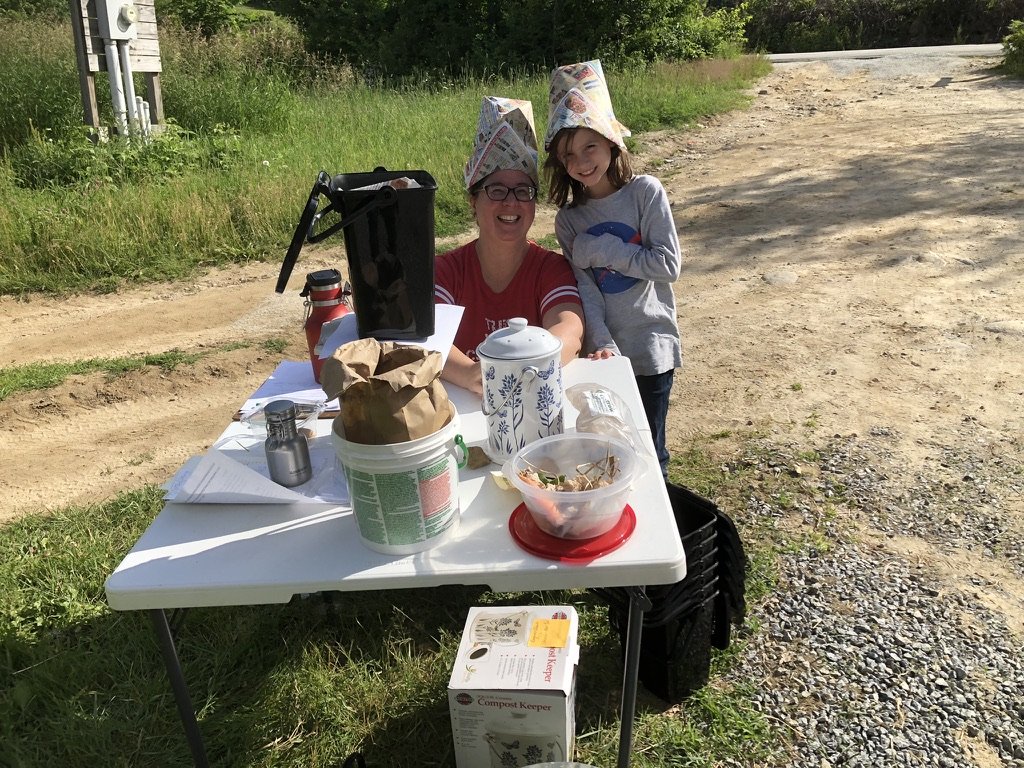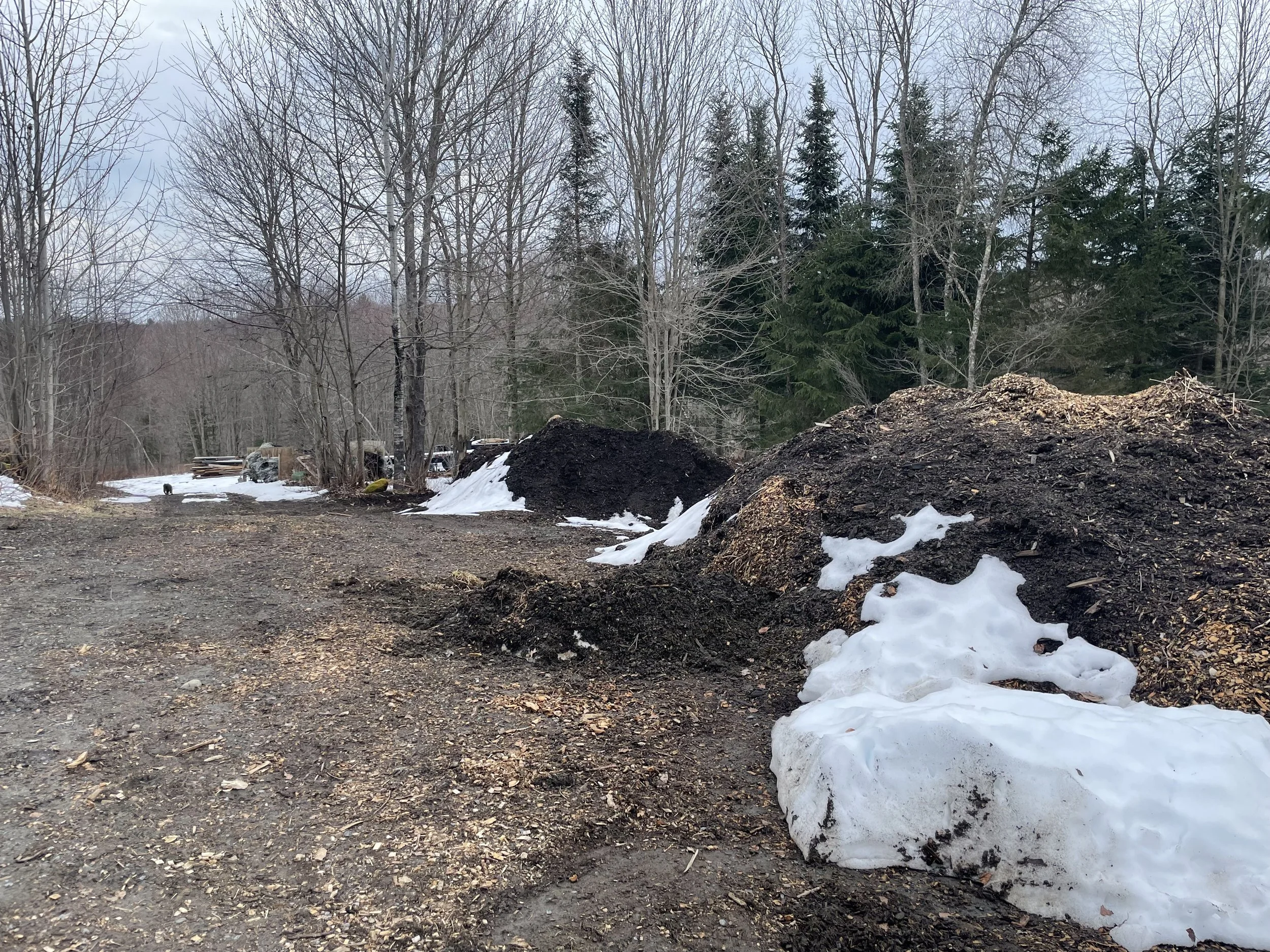
Community-Oriented On-Farm Composting
Connecting farmers looking to compost with community members looking to divert food scraps from landfills. Community-oriented composting is a mechanism to move nutrients from where they are to where they are most needed. This can be especially helpful in rural areas where population density does not support hauling routes or centralized municipal or commercial compost operations.
It started with an idea at a Food Cycle meeting.
For Vermont to meet its diversion goals, we need to consider how to better support and incentivize farmers to compost food scraps. This work started by exploring the opportunities and challenges small farms face in managing community food scraps through a survey of around 40 farmers and those working with farmers. as part of their on-farm fertility strategy—and in some cases, as the foundation for a new farm enterprise.
Here’s what we learned:
Opportunities for farmers
Access to organic resources to improve soil health, water quality, farm viability
Increased services for CSA or other customers
Potential for converting part-time employees to full-time
Potential for adding revenue streams
Challenges for farmers
Balancing agricultural practices and solid waste management practices and related regulations
Not wanting to be regulated as a solid waste facility
Technical know-how / confidence
Concerns about potential contamination
Concerns about consistent feedstocks
Taking on “one more thing”
We also talked with community members
On-farm food scrap composting can offer an affordable, local, and convenient option for diverting organics—while also creating new opportunities for micro haulers.
Challenges include understanding and implementing careful source separation and a developing a clear understanding of how to work in partnership with participating farmers.

Our next step was to create a guide
It was clear that there was interest. And confusion.
The Food Cycle Community of Practice developed a guide to key considerations for exploring on-farm food scrap composting:
The (changing) regulatory landscape
Business planning
Composting Systems
Volume literacy
Additional resources for connecting with your community
Case studies of 3 farms already composting community food scraps
Building Healthy Farms, Healthy Communities
Funded by the USDA Rural Utilities Services Solid Waste Program
From 2022-2025, we worked with 14 farms in Vermont, New Hampshire and New York to reduce solid waste, protect water quality, and improve soil health through community-oriented food scrap composting and manure management.
Supporting Small Farms
Many of our partner farms already composted for on-farm use, but few had been equipped to handle food scraps from their wider communities. Farmers often lacked resources, training, and regulatory guidance to expand composting or sell compost products. This project helped bridge those gaps by providing tools and training so farmers could:
Manage livestock manure more effectively.
Navigate food scrap regulations and certification requirements.
Build on community-supported agriculture (CSA) models by integrating food scrap collection.
Establish their compost programs for long-term sustainability.
Farm Composting Assessments
Used to clarify farmer and community needs for managing food scraps, manure, and other organic residues.
Technical Assistance
Virtual and onsite support was provided for (1) managing food scraps and agricultural waste at community-oriented composting sites, and (2) successfully engaging community members and ensuring clean streams of organic materials.
Project components
Trainings
Local, regional, and remote trainings on all aspects of community-oriented composting was provided, including hands-on sessions at partner farms open to other farmers and community members.
Multimedia Toolkit
Our approach and the tools developed for farmers, communities and organizations supporting farmers are freely available in CAV’s online On-Farm Composting Toolkit. The toolkit and training resources created through the project served as a model for rural farming communities across the U.S.
Project impact
Participating farms and communities learned cost-effective, practical ways to turn food scraps and manure into valuable compost. The project delivered:
Waste reduction through diversion of food scraps and other organics from landfills.
Healthier soils that reduced fertilizer use, strengthened food security, and encouraged soil stewardship.
Cleaner waterways through the use of best practices for compost both siting compost systems and compost use.
Community awareness around waste diversion, composting, and water quality.
Food recovery initiatives that built resilience and supported local food systems.
New income streams for farms through composting and soil product sales.










